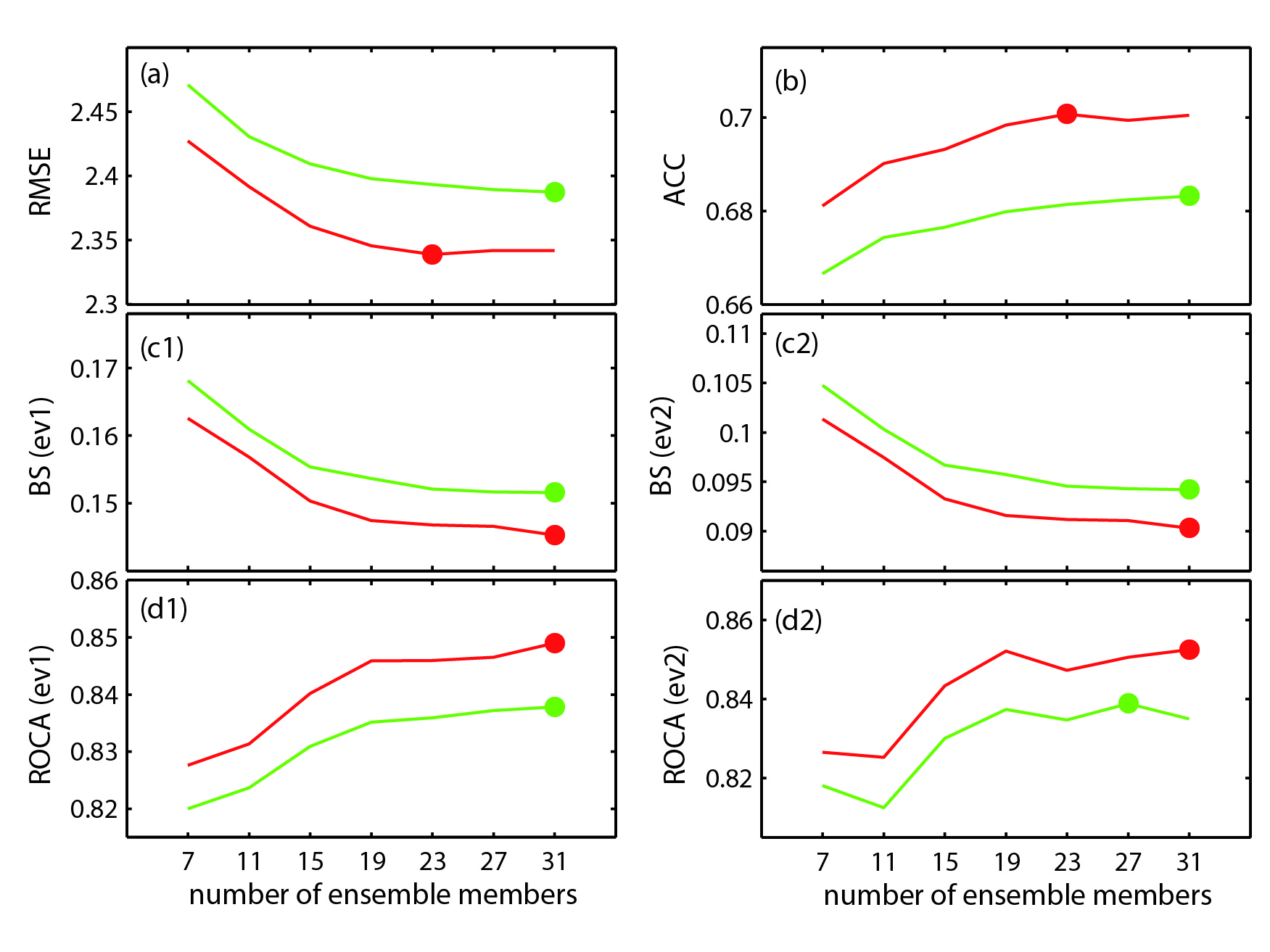State Key Laboratory of Numerical Modeling for Atmospheric Sciences and
Geophysical Fluid Dynamics (LASG)
Institute of Atmospheric Physics, Chinese Academy of Sciences

Vol. 1/No.1 December 2016
A New Approach to Generating Initial Perturbations for Ensemble Forecasts: Orthogonal Conditional Nonlinear Optimal Perturbations
Considering the chaotic characteristics of atmospheric system, and the uncertainty of initial condition and numerical model, the single and deterministic forecast result is uncertain. Ensemble forecasting is an important way to reduce forecast errors and increase forecast skills. In ensemble forecasting, the quality of initial or model perturbations determines the ensemble forecast skills. Thus, improving the quality of ensemble initial or model perturbations is important.
Recently, Prof. DUAN Wansuo (Institute of Atmospheric Physics) and Dr. HUO Zhenhua (Numerical Weather Prediction Center, China Meteorological Administration) have proposed a new approach, i.e. Orthogonal Conditional Nonlinear Optimal Perturbations (CNOPs), to generate initial perturbations for ensemble forecasts. They have applied this approach in Lorenz-96 model and compared the ensemble forecast skills associated with orthogonal CNOPs and orthogonal singular vectors (SVs). The results show that the difference between the ensemble forecast skills of orthogonal CNOPs and orthogonal SVs gradually increases with the forecast time increasing, and the forecast skill of orthogonal CNOPs method is much higher.In addition, more ensemble members do not mean higher ensemble forecast skills, and suitable ensemble size could contribute to the highest ensemble forecast skills. Orthogonal CNOPs need less ensemble members to reach higher forecast skills of ensemble forecast, as compared with orthogonal SVs. These results indicate the effectiveness and superiority of orthogonal CNOPs for ensemble forecasting.

Figure 1. The averaged skill scores over 500 truth runs and all lead times in 10 days forecast period for CNOPs method (red lines) and SVs method (green lines). The horizontal axis represents the numbers of ensemble members, and the vertical axis denotes different evaluation scores. The dots indicate the ensemble forecast members’ number that corresponds to the highest skill for different ensemble sizes.
This study is published in Journal of Atmospheric Sciences (doi: http://dx.doi.org/10.1175/JAS-D-15-0138.1).
Citation:
Wansuo Duan and Zhenhua Huo, 2016: An Approach to Generating Mutually Independent Initial Perturbations for Ensemble Forecasts: Orthogonal Conditional Nonlinear Optimal Perturbations. J. Atmos. Sci.,73, 997–1014, doi: http://dx.doi.org/10.1175/JAS-D-15-0138.1.
Download: http://journals.ametsoc.org/doi/10.1175/JAS-D-15-0138.1
Contact: DUAN Wansuo,duanws@lasg.iap.ac.cn;
E-mail: lasg_newsletter@lasg.iap.ac.cn
Editors: Chuanyi Wang (wangcy@lasg.iap.ac.cn), Kangjun Chen(ckj@lasg.iap.ac.cn)